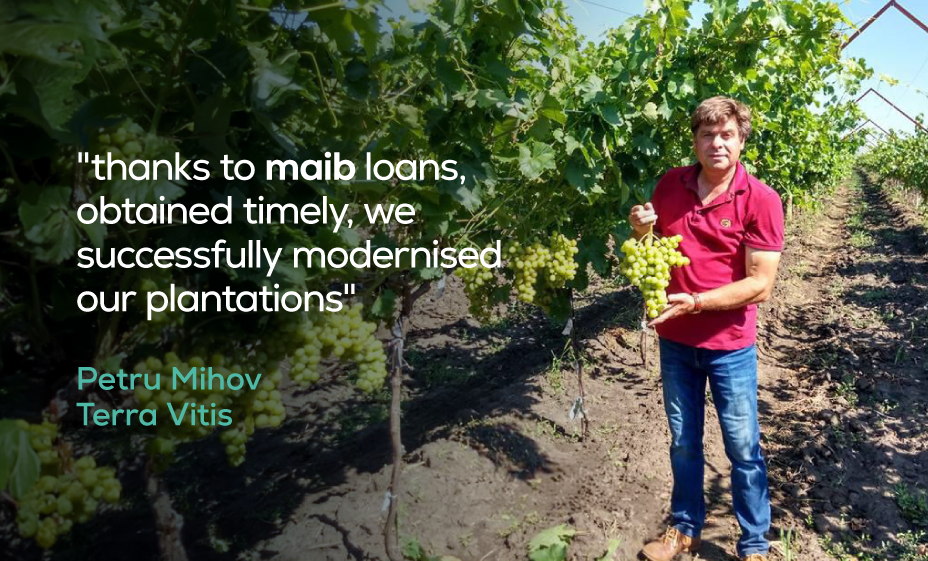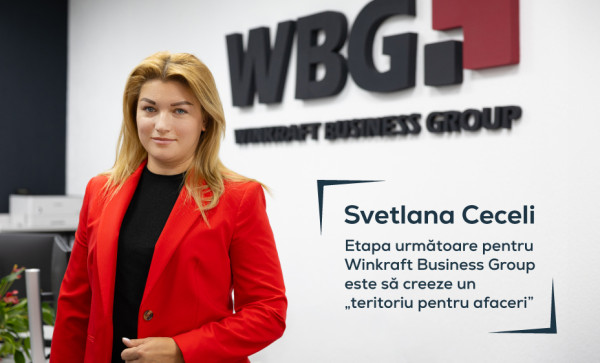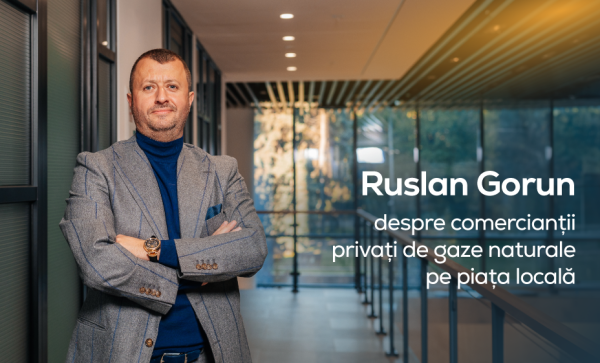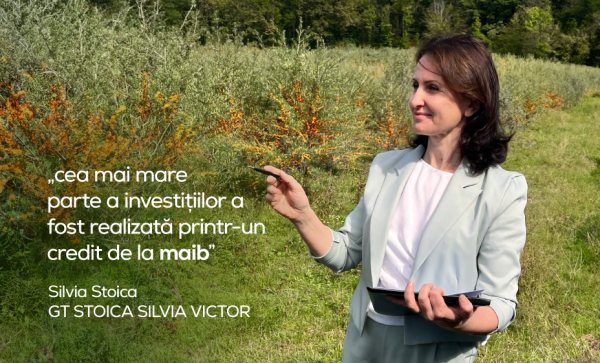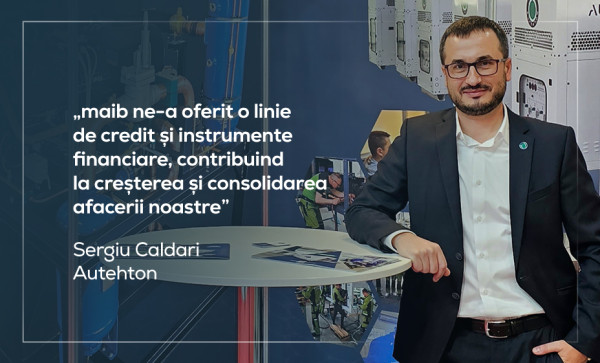Pavel Zingan in an interview with Petru Mihov, founder and director of Terra Vitis, maib business customer.
Petru, hello! Terra Vitis was founded in 2002, more than 20 years ago. What's your background?
We officially became an LLC in 2002, and before that, we worked for many years as a "peasant household" in Cahul. In 2024, I will have been working in agriculture for 41 years.
What is Terra Viti's primary specialisation?
In the beginning, we were almost all-rounders. We wanted to diversify agriculture and worked in several sectors simultaneously. We had nearly everything- a farm with 450 head of cattle, orchards, vineyards, field crops, and 600 sheep.
Over time, we changed our strategy a bit and decided to narrow down the sector. Now we have about 2000 hectares of plantations, of which 140 are perennial - cherry, pear, apple, table and technical grape varieties. The field crops include all field crops, eight in total, and we have 500 sheep.
If you had to highlight one thing, Terra Vitis's "calling card" what would it be?
It would be table grapes. We have one of the largest collections of table grapes, currently consisting of about 180 varieties.
The planting area for the commercial varieties is about 40 hectares, and we export most of the harvest. We also have a specific area dedicated to, let's say, our agricultural experiments with table grapes because we understand that the market is constantly changing and asking for something new. We have to be ready to offer new varieties. That's why we have dedicated areas where we do small experiments.
What varieties do you have in your collection?
We have table varieties from almost all the world, mainly from Italy, California, Spain, France, Central Asia, Russia, and Ukraine. Of course, we also have Moldovan varieties.
Which varieties are most popular?
For example, seedless grape varieties are becoming increasingly popular in Europe.
Do you attend international exhibitions to bring new varieties?
Yes, I regularly attend exhibitions, which is essential to my job. I have to see the varieties, familiarise myself with the details, and choose the most suitable ones. It's one of the most enjoyable parts of my job because I can combine travelling with work.
During these trips, we acquaint ourselves with vine varieties or other crops and learn about new technologies that are not yet used in Moldova.
In the last 10-15 years, many new vine plantations and other high-yielding crops have appeared in Moldova, requiring new technology knowledge.
What is the primary market for your business?
We can successfully compete in the European market thanks to our ability to meet all the necessary standards and stay current with the most advanced technologies. We now export to Romania and other European countries such as Poland, Germany, etc.
Our business follows a strategic approach to selling grapes. Most of our produce goes to the European market, as the Moldovan market is small and well-supplied with products from local producers during the season. We strategically sell on the local market, mainly after the end of the season, utilizing our refrigerators to store the grapes. At the end of the season, part of the harvest is then sold on the local market.
You have been in agriculture for over 40 years. What has changed most in this field since then?
I'm an agronomist by profession. I graduated from Agrarian University in 1983 and have been working in the field all this time. Technological progress has brought many changes, but despite that, some basic aspects remain the same.
First, it is our relationship with the soil and the way we cultivate the land. Yes, farming is a business, but it should not destroy land for profit. We also have to keep in mind that the soil is depleting and the climate is changing, so there are trends that help us maintain productivity and conserve soil resources.
The main change is in the methods of soil processing. Now, minimum processing is relevant. We used to use tillage, but we have abandoned it for some time to preserve as much soil moisture and resources as possible.
Technologies such as no-till are also becoming increasingly popular. We're constantly adapting to these technologies and trying to follow them. We have a particular area divided into several plots where we do experiments. We monitor the results and identify the most efficient and correct tillage methods. This is the future, and we must work on it today to be relevant tomorrow.
Also, one of the changes we see is the emergence of new crops. For example, we did not grow rapeseed in Soviet times. Now, it is one of the most popular crops in Moldova.
Another change we see now is the trend towards sustainable agriculture. This means that it's not enough to plant and harvest. You have to do everything to preserve the crop. We mean protection against hail, drought, rain, etc. A lot of resources and effort are invested in protecting the crop. We use special films, anti-hail systems, irrigation systems, and so on. For example, we are now supplementally irrigating about 65 hectares of perennial crops.
Do these systems require large investments?
To implement our plans and invest in orchards and plantations, we turned to maib for a loan. It was important for me to invest the necessary funds in time to preserve the crops, and this required additional financial help. We have been cooperating with maib since the beginning, but I first asked for lending only a few years ago. Thanks to timely loans, we were able to improve our plantations.

